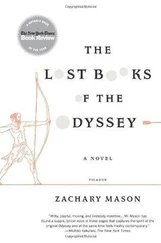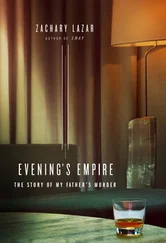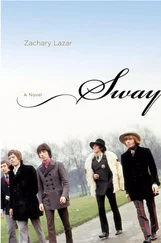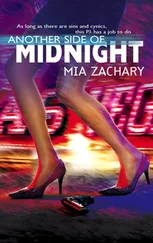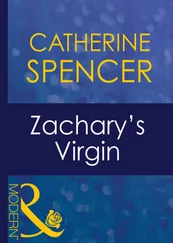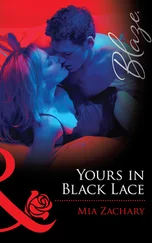“Then you don’t need no drugs.”
“I don’t. Here’s 280 dollars, no, here’s three hundred, keep the change and the keys, we’re leaving, I have work to do. .” Fatso picks up the walkie-talkie.
“I’m calling the police.” It’s pouring outside. I look at the amber light of the single street lamp out there, the barb wire. Winter’s in the air, I can feel it. Why don’t I just give up? Why do I have to agonize in this world that doesn’t really need me? Why do I keep entertaining the gods with the twists and turns of my self-inflicted fiasco?
“Hey, wait!” Danny says. “We can find twenty grand. Twenty and not a penny more.”
“What are you doing, man?” I pull on his sleeve.
“Twenty cash and that’s it.” He shakes my hand off. “Who’s gonna drive me to my place?” The three Arabs/Persians exchange glances and mumble something. Pig Man nods to one of the blue Adidas boys and he zips up his jacket. A key chain with a BMW emblem and a small soccer ball jingles in his hand. He and Danny leave. I’m left with the other two Arabs. I pull up a chair by the greasy back, sit in it, and curse them with dirty looks for the next hour or so.
*
Danny works as an assistant to one of the most famous names in New York fashion photography, Hito. Hito (Yasuhito Kabayashi) immigrated to America from Japan in early sixties. He was eighteen at the time and worked in the Osaka subway as a train-pusher, shoving in passengers during the morning and evening rush hours and closing the doors of the train car. One day — Hito told Danny — he saw two men getting off the train. They looked different from the people whom he usually pushed and spoke a strange, but beautiful, language. Hito followed them. He kept following them all day long, wherever they went — to restaurants, office buildings, and shops — trying to understand who they were, what they were saying. He was fascinated. From the reception desk of the hotel they were staying in, he learned that they were American businessmen. Ten months later Yasuhito Kabayashi arrived in New York to study at the Institute of Photography. Three years later, he became an assistant to the great Avedon. Later, he started shooting for Vogue, Harper’s Bazaar , and other fashion magazines. In the seventies, he opened his own studio in Manhattan; in the eighties, he did the ad campaigns for Gucci, Rolex, Dolce & Gabbana, Lincoln, Hugo Boss, and others. On top of this, he did gallery shows. His images are famous for their unbelievable detail, which he achieves with a large format camera on 8x10 negatives, specially ordered from NASA. He’s also known for the mathematical accuracy of his work. When he shoots in black and white, he uses extremely low-grain film, which Kodak makes especially for him. When he shoots in color, he does it in saturated, electric, bright colors on Fuji negatives, again special ordered. In Hito’s frame, everything is in focus, from the green nail polish of the female model in the foreground, to the delicate scales of the black molinesia in the fish tank somewhere in the background. In his photo sessions, Hito uses tons of light and countless make-up artists, designers, and art directors. Hito’s trick is that he manipulates things in a mind-blowing way in his lab, creating his own new, surrealistic world. Hito captures reality with militaristic mercilessness, then plays with its elements and rearranges them the way he likes. Hito has several assistants. One of them is Danny. He helps in the lab, primarily. And he has a key to it.
*
“Thank you, brother!” I say as I unload my things from the car. “Thank you.” I want to believe that I would have done the same for him.
“You would have done the same for me,” Danny sniffles. “I’m getting a cold or something. You’ll pay me back tomorrow when we sell this. Let me carry the bag, you take your shit and let’s get the fuck outta here.” The Arab-Persians bring two large trash bags. I put my stuff in the first one and the grass in the other. Pig Man is now outside, on the steps under the amber lamp, smoking a cigarette. He looks at us with a peaceful smile, as if seeing some relatives from another city to the door. I take my camera and point it at him. I know that it’s too dark for a good picture, but I take it anyway. He places the cigarette in his mouth, laughs through it, grabs his crotch through the fabric of his sweat pants, and shakes it vigorously. I’ll bet he hasn’t seen his penis in years.
*
The cab pulls up in front of a tall, red brick building. Danny points to a building on the other side of the street.
“Do you remember Bernard Foucault, the French guy I introduced you to several years ago?”
“How could I forget him ?! The Artist?”
“Yeah. He moved here with his partner a few months ago. They rent the top two floors on that building on the corner.”
“Is she. .” The knot in my stomach, again that damn knot in my stomach. “Is she an artist, too?”
Danny starts laughing. “Are you for real?”
“Why?”
“She? Really?”
“Yeah. Is she. .”
“She is a six-foot-seven dude. A sculptor. With a mustache and a beard this long.”
“No. Are you. .? So you’re saying that. . Bernard is. .” I start breathing harder.
“You didn’t know?! You couldn’t tell? The guy was so. . Zack, Zack, Zack. .”
His paintings run through my head now. The first one I saw — those enormous monochromatic canvases with male bodies, reclining male bodies, naked male bodies, naked but deprived of sexuality. Actually, that’s what repelled me in his work — the total lack of sensitivity and eroticism. Perhaps in trying to conceal his own homosexuality, the Artist had preferred to deny sexuality all together. Why did he have to hide his queerness, God damn it? His patient smile, with which he welcomed my furious attacks on high art , runs through my mind, his kiss goodbye, his wet lips, which I naively took for a French farewell, the card he put in the palm of my hand, and my fingers, which he tenderly closed over his name.
How did I miss all that?
On one of the doorbells, there is a sign reading BUTTERFLY ENTERPRISES — Hito’s lab. The name comes from one of his passions, Danny told me. Hito likes to photograph butterflies in the act of mating. In the thirty-five years of his photographic career, he has amassed a rich collection of mating butterflies. Black and white and color photographs, captured during his countless travels all over the world, carefully cataloged and dated with all the necessary technical information.
We drag the large bag to the elevator and go up to the top floor, which belongs to Hito entirely. Danny turns the lights on in one of the rooms in the lab, quickly shows me where he works and what he does, we hide the bag in a storage place that no one uses, and Danny pushes me towards the front door. The next two days nobody will be working here, it’s absolutely safe. Now let’s go.
“Danny.” I say. “I want to stay here.”
“What?”
“I want to spend the night here. Please. Leave me here for the night. Show me the chemicals and the paper and give me just one night here. Only one. Please!” I pull out my negatives, turn on one of the light tables, lay them on it, find a magnifier, and bend over them. I have never, ever been in a lab like this. And this is everything I used to dream about. The perfect working conditions. Why did I come to America, why did I move to California?
“Hey!” Danny exclaims. “What’s this?”
“Some stuff.”
“You didn’t tell me you’ve been taking pictures.”
“I forgot.”
“When did you take them?”
“Over the last couple of days.”
“What are you going to do here?”
Читать дальше

